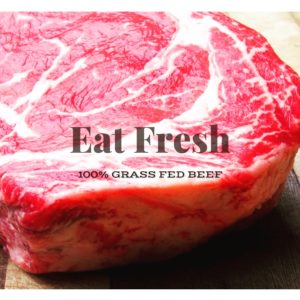Is The Grass Green Enough?
Despite all the talk about cows being a major culprit in our weather woes, cattle, AND thus humans eating beef, can be a force for good in the world. The negatives associated with cattle are a management matter rather than an inherent cow issue.
Throughout all of history, milk, meat, hides and other cattle products and services have allowed mankind to improve health and home. But there are two other beneficial factors cows provide in tandem that are often overlooked – mowing and manure!
Few would argue against a statement that fertile soil is important to the future of the planet. (Actually, there are more and more corporations who want us to believe that food from factories will serve us just as well.)
Yet, topsoil doesn’t just happen. Bare soil without green growth dries out and diminishes in fertility. Topsoil is best developed through expanding roots systems interacting with microbes of all sorts below ground, coupled with rapid green growth above ground. The more active the growth, the richer the soil becomes.
Most people might judge that forests have the most fertile soil, but that’s not so. A forest canopy is not active green growth. The trees leaf out in the spring, but after that, little changes through the growing season.
On the other hand, a farmer/manager employing a herd of grazing, dung-generating cattle can dramatically invigorate a pasture.
The mobbing, mowing, manuring, and moving bovines spur on green growth which in turn stimulates root and soil development below. Each time the herd returns to re-mow the top of the grass, trampling the rest, and depositing more urine and dung, another round of rapid growth ensues.

When Europeans first arrived, the areas of the U.S. where herds of buffalo roamed were witnessed to have had topsoil depths of up to 6′. Our plow-based farming of those lands has greatly diminished those soils.
Rotationally grazing herds of cattle is really the only way we have to massively restore soils. So if someone suggests you shouldn’t eat beef for environmental reasons, realize that you can be part of the solution rather than part of the problem.
That only holds true if the beef you buy is from animals raised on a highly managed rotational grazing system, rather than fattened in a feedlot with corn and soy.
Did you know that almost 80% of all the Grass fed beef sold in the United States is imported. To make matters worse the USDA allows any meat that is produced to the “USDA Standards” to be labeled Product of the USA. Even if it was born raised and butchered in another country. The catch is the USDA doesn’t actually verify that their standards are meet, making it very easy for unscrupulous meat packers to cheat. To be sure you’re on the right side of the issue, it’s best to buy from a local farmer you can confirm raises pastured cattle.
Similar management of other meat animals can also make a very positive contribution to soil fertility. Pigs, sheep, bison, goats and chickens can and should be pastured to create sustainable results, and yield the most nutritious foods.


